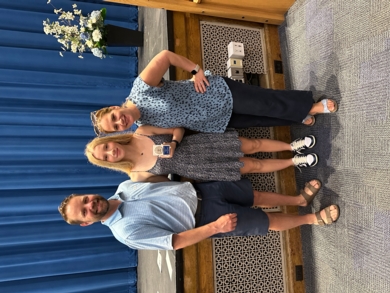|
Kenmore West Senior High School
Class Of 1960 |
|
|
|
ANNOUNCEMENTS
|
This is our 2025 scholarship recipient,
For those of you who did not have the opportunity to donate to the 2024 scholarship fund, we are starting our campaign for 2025 and will be accepting donations toward that goal. Please consider donating so we may continue to fund the Kenmore West Class of 1960 David Hight Scholarship Fund.
Checks to be made out to:
Kenmore West Class of 1960 (and marked Scholarship)
and mailed to:
Dianne Logan Weinert
135 Fairways Blvd.
Williamsville, New York 14221
The Village of Kenmore is "Buffalo's First Suburb". Following the Civil War, the City of Buffalo's population grew tremendously. With the invention of electric streetcars, people were able to live outside of walking distance from their jobs. By 1888, L.P.A. Eberhardt purchased land just north of the Buffalo border and began to build a home.Churches were erected beginning in 1891 and the first Village store was opened in 1897.
The first school was erected in 1892. The Kenmore Union School was built where the Municipal Building now stands. The school was utilized until 1911 when the Washington School was opened.
In 1889, the Village boasted a horse-drawn omnibus, which ran up and down Delaware Avenue at no charge to passengers. Lots sold for $250.00 and by 1890 nearly 300 people called Kenmore home. There were no sidewalks, streetlights or sewers. Drinking water was scarce and there were only dirt roads.
By 1899, the Village had enough residents to qualify for legal incorporation. 313 persons signed the proposition calling for incorporation. An election was held and the Village was incorporated on September 5, 1899.
The Fire Department was established in 1903 and the Kenmore Police Department was created in 1919.
HOW DID THE VILLAGE OF KENMORE GET ITS NAME?
Former Village Historian, Frederick Parkhurst, explained how the Village was named “Kenmore” in his 1925 book, History of Kenmore. The book explains that Louis Eberhardt, known as the Father of Kenmore, opposed naming the Village “Eberhardt”. He was responsible for buying up farmland and subdividing the property into a suburban development. The building which is portrayed on the Village logo is of the Eberhardt Mansion, located at the corner of Delaware Avenue and Kenmore Avenue.
The following is an excerpt from Mr. Parkhurst’s book:
It was proposed calling the village "Eberhardt" ; but firmly
and modestly Mr. Eberhardt said, "No, they might nickname it
'Dutchtown'." But the real reason was Mr. Eberhardt's aversion
to personal publicity and display. The Erie Railroad was
building a station at this time in the north-east section of
Buffalo near Main Street and had chosen the name "Kenmore",
but Mr. Eberhardt with an ear for euphony, appropriated
the name for the fast growing community and the name
"Kensington" was attached to the Erie Station. A sign bearing
the name "KENMORE" was placed at the intersection of Delaware
and Kenmore Avenues, where all who ran might read.
There are several places called Kenmore in the United States,
notably Kenmore in Fairfax County, Va., the home of Washington’s
sister, and a village in Ohio. Probably both these
places, our own village, and other places so named, took their
name from a small island on the south-west coast of Ireland;
or from a village in Scotland.
VILLAGE HISTORIAN: Ed Adamczyk
http://www.villageofkenmore.org/





